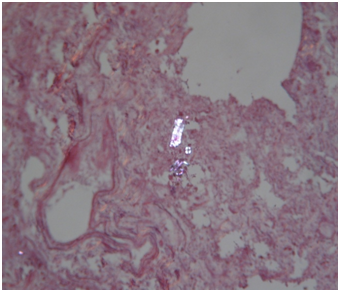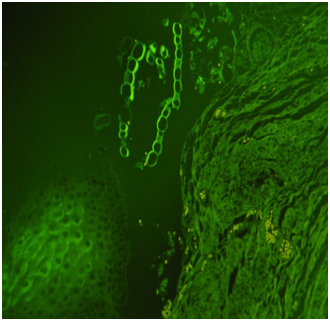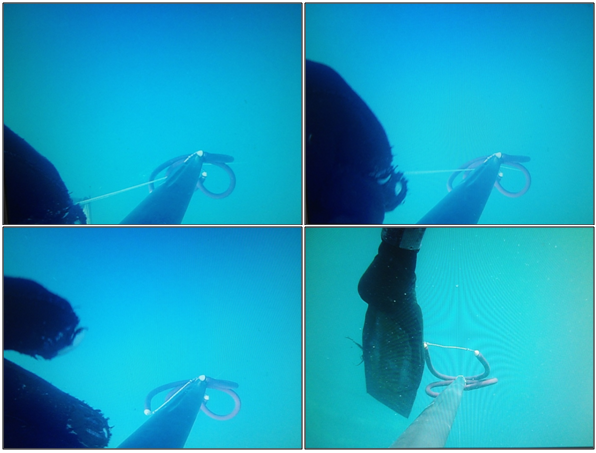eISSN: 2471-0016


Proceeding Volume 6 Issue 1
1Department of Public Health, Experimental and Forensic Medicine, University of Pavia, Italy
1Department of Public Health, Experimental and Forensic Medicine, University of Pavia, Italy
Correspondence: Giovanni Pierucci, Department of Public Health, Experimental and Forensic Medicine, University of Pavia, Italy
Received: January 01, 1971 | Published: January 25, 2018
Citation: Pierucci G, Forni D, Lavorato MC, et al. Morphological and chemical findings in drowning: analysis of 10 cases. Int Clin Pathol J. 2018;6(1):22–24. DOI: 10.15406/icpjl.2018.06.00148
The determination of chemical substances present in the drowning medium could be a complementary tool in the forensic investigation.1,2 Referring to this, both strontium (Sr) and silicon (Si) have proven to be interesting in the diagnosis of drowning (D), in addition to the histological and SEM plankton research in lower airways (Figure 1,Figure 2)(Table 1).
Spectrum processing: No peaks omitted
Processing option: Oxygen by stoichiometry (Normalized) Number of iterations = 6 Standard;
C CaCO3 1-Jun-1999 12:00 AM
Na Albite 1-Jun-1999 12:00 AM Al Al2O3 1-Jun-1999 12:00 AM Si SiO2 1-Jun-1999 12:00 AM
S FeS2 1-Jun-1999 12:00 AM
Ca Wollastonite 1-Jun-1999 12:00 AM Fe Fe 1-Jun-1999 12:00 AM
Element |
Weight % |
Atomic % |
Compd % |
Formula |
C K |
17.22 |
23.53 |
63.08 |
CO2 |
Na K |
2.21 |
1.58 |
2.98 |
Na2O |
Al K |
0.73 |
0.44 |
1.38 |
Al2O3 |
Si K |
13.49 |
7.88 |
28.85 |
SiO2 |
S K |
0.54 |
0.28 |
1.36 |
SO3 |
Ca K |
0.55 |
0.23 |
0.77 |
CaO |
Fe K |
1.23 |
0.36 |
1.59 |
FeO |
O |
64.03 |
65.7 |
||
Totals |
100 |
Table 1 Chemical findings
We selected 10 suspected drowning cases, in particular 5 bodies recovered from seawater (Sw) and 5 recovered from freshwater (Fw). In all cases, the investigation included an anamnestic and circumstantial study, an autopsy and histology, with particular attention to the polarization and fluorescent examination.
Within the 5 bodies recovered from the Sw, oligoelements, in particular Sr and Si were studied; only Si was studied in Fw suspected drowning. This was performed separately for the left (l) and the right (r) ventricles, with special regard to the difference of the concentration of each single oligoelement in both the l and r ventricular blood . Aquatic samples were analyzed in all cases.3
Autopsy: Classic pictures of D. in 9 cases. In 4 cases (Sw), the presence of pleural effusion, as well.
Histology: Acute emphysema was the prominent observation; edema and hemorrhages were also present.4 In 9 cases (Figures 3-6), exogenous material in the airways, comprehensive of planktonic boli in the lower branches, clearly demonstrable at polarization microscope (and possibly confirmable at SEM’s elemental analysis with EXD). Zoo- and phytoplankton have been better identified in the UV microscope. It is mandatory to differentiate the planktonic material from gastric content, regurgitated and aspirated (Figure 7 & 8).
Chemical findings: 5 bodies from the Sw have been investigated. In 4 cases was significantly positive for Sr and Si. The only negative for Sr and Si was a 37 years old subaqueous swimmer and the death was recorded by a camera (Figure 9): histologically, the lungs tested were negative for plankton; disseminated myocardiosclerosis was microscopically identified (sudden death). In Fw, Si was positive in 4/5 cases.5


Figures 3,4 Drowning in seawater. Images of endoalveolar zooplankton (protoconch of crustacean) (EE, 480 X, polarized light).

Figure 5 Drowning in freshwater; recovery corpse in the sea after 20 days. Endoalveolar phyto- and geoplankton (EE, 240X, polarized light).

Figure 6 Drowning in freshwater; recovery corpse after few hours. Geo- and phytoplankton in a lower bronchus (EE, 120X, polarized light).

Figure 7 Same case of Fig. 7. Fragments of food (cooked meat and tuber cells) in the main stem bronchus (EE, 240X).

Figure 8 Same case of Fig. 7. Plant material identified in the esophageal mucosal laceration (EE, 480X, UV).

Figure 9 Sudden cardiac death. A 37 years old subacquoeous swimmer had plunged in apnea to 40 meters deep. Still images from underwater video (the camera was fixed on the speargun and was recovered on the sea bed): frames A and B (at second 4th and 5th), the speargun is held by the hand of the swimmer; frame C (at second 7th), the hand leaves the rope; frame D (at second 18th), the speargun moves away from the body and records a right foot flipper. The timing of frames shows the sudden stop of motor functions.
In order to diagnosis of drowning, our results allow us to propose an investigation protocol, in addition to classical findings:6-13
None.
The author declares no conflict of interest.

©2018 Pierucci, et al. This is an open access article distributed under the terms of the, which permits unrestricted use, distribution, and build upon your work non-commercially.